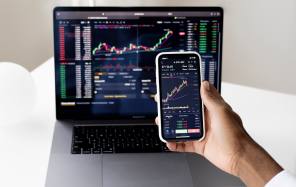

Gold has historically been globally recognised as the ultimate safe haven asset to hold in times of geopolitical turmoil.
Some hold the precious yellow metal for cultural reasons, while other investors use it to diversify their portfolios.
But gold can take multiple forms and with commodities having suffered bearishness in recent years, has physical gold lost its shine?
Or do investors prefer alternative forms, or no exposure at all to hedge their portfolios?
Bullion
Most commentators in the industry stress that physical gold in the form of gold bars, jewellery or coins – also dubbed bullion – is lagging other types of gold investments.
Caroline Bain, chief commodities economist at Capital Economics, explains: “Physical gold demand (ie, for jewellery, rather than investment demand) has been lacklustre, at best, in recent months."
At the time of writing, the price of gold was £983.52 per troy ounce. In comparison, this is higher than when the price hit a low of £701.29 per troy ounce in July 2015, according to data from online bullion dealer, BullionByPost. This is also higher than the gold price level seen in the first half of 2018.
Geoffrey Cher, business development lead at Digix, says: “Owning physical gold puts individuals in full control of their assets, removing the risk of a counterparty in the form of governments or big corporations and enterprises.
“Moreover, accredited members of the London Bullion Market Association (LBMA) have branches all over the world, providing the possibility of physically storing your gold in multiple geographical locations, avoiding concentration risk in one continent.”
Juan Carlos Artigas, director of investment research at the World Gold Council, notes an uptick in several types of gold investments over recent years.
“Gold investment demand has grown, on average, 15 per cent each year since 2001. The largest share of demand (about 90 per cent) is linked to bar and coin demand, especially since it’s still the only way to buy gold in many markets,” he points out.
But, he adds: “Since 2004, gold-backed exchange-traded funds have gained popularity, with cumulative holdings worth more than £100bn ($76.7bn) and having grown 40 per cent over the past four years.”
Gold derivatives
This view is echoed by Adrian Ash, director of research at BullionVault.
Mr Ash says: “Physical gold trading through London, the heart of the world's bullion trade, has been overtaken in notional value by trading in US gold derivatives.
"I think that reflects both the perceived retreat of counterparty risk since the banking crisis and also the abundance of low-cost credit offered to hedge funds."
Ms Bain says: “Gold investment has been increasing on the back of safe-haven demand at times over the past six months, generally rising when bond yields have dropped back and risk aversion has increased.”
Mr Artigas notes an increased appetite among central banks’ purchases of gold.
He says: “In particular, 2018 marked the ninth consecutive year of net purchases by central banks and the highest annual demand since the end of the gold standard in 1971. In addition, bar and coin demand grew 8 per cent year-on-year, driven by China and other countries in South East Asia."
But Ms Bain questions this view and observes a slowdown in gold demand from Asian countries.
She observes: “Even looking through the Lunar New Year distortions to China’s imports, the latest Chinese and Indian trade data still point to very weak gold demand from the two largest markets in February.”
Mr Artigas says: “Gold investment demand – whether in the form of gold-backed ETFs or bars and coins – fell in 2018, driven by net outflows in the second quarter and third quarter. However, this trend reversed as investors used gold in their portfolios as stock markets tumbled.
“So far in 2019, many central banks have continued their net purchases and gold-backed ETFs have seen net inflows, especially after a very strong January.”
Geopolitics
Ms Bain says: “Historically, rising safe-haven demand tends to give a small boost to the price of gold in the months preceding certain geopolitical events, such as the start of military conflicts, but that boost to prices tends to unwind soon after.”
But Mr Ash believes that geopolitical risks do not immediately impact gold in the long-term.
He says: “For all the wailing and gnashing of teeth, geopolitical crises, like Brexit, only become an issue for investors if they either start to hurt financial markets or they block cross-border flows."
The initial shock of the 2016 referendum result saw the price of gold jump 22 per cent in six hours for UK investors, but the FTSE has since shrugged off forecasts of an economic downturn post-exit, according to Mr Ash.
But he suggests that a government led by Labour leader Jeremy Corbyn could boost the demand for physical gold should he impose exchange controls.
“History says the shutters will likely come down without warning when the markets are closed. So physical gold is a simple, legally secure asset you can easily buy overseas in advance,” says Mr Ash.
The outlook for gold investments is far from pessimistic. Gold investment is on the rise, but does this exclude physical gold?
Mr Artigas says: It’s worth noting that the gold-backed ETFs we tracked are either fully backed by gold (with very few exceptions that may hold less than 10 per cent in cash or other investments). This means that while investors buy shares of gold-backed ETFs in exchanges around the world, net purchases result in physical demand for gold.”
He adds: “Futures tend to be used by more tactical investors, who may use leverage and active trading strategies to manage their positions. As such, their investment rationale may be quite different.”
saloni.sardana@ft.com



